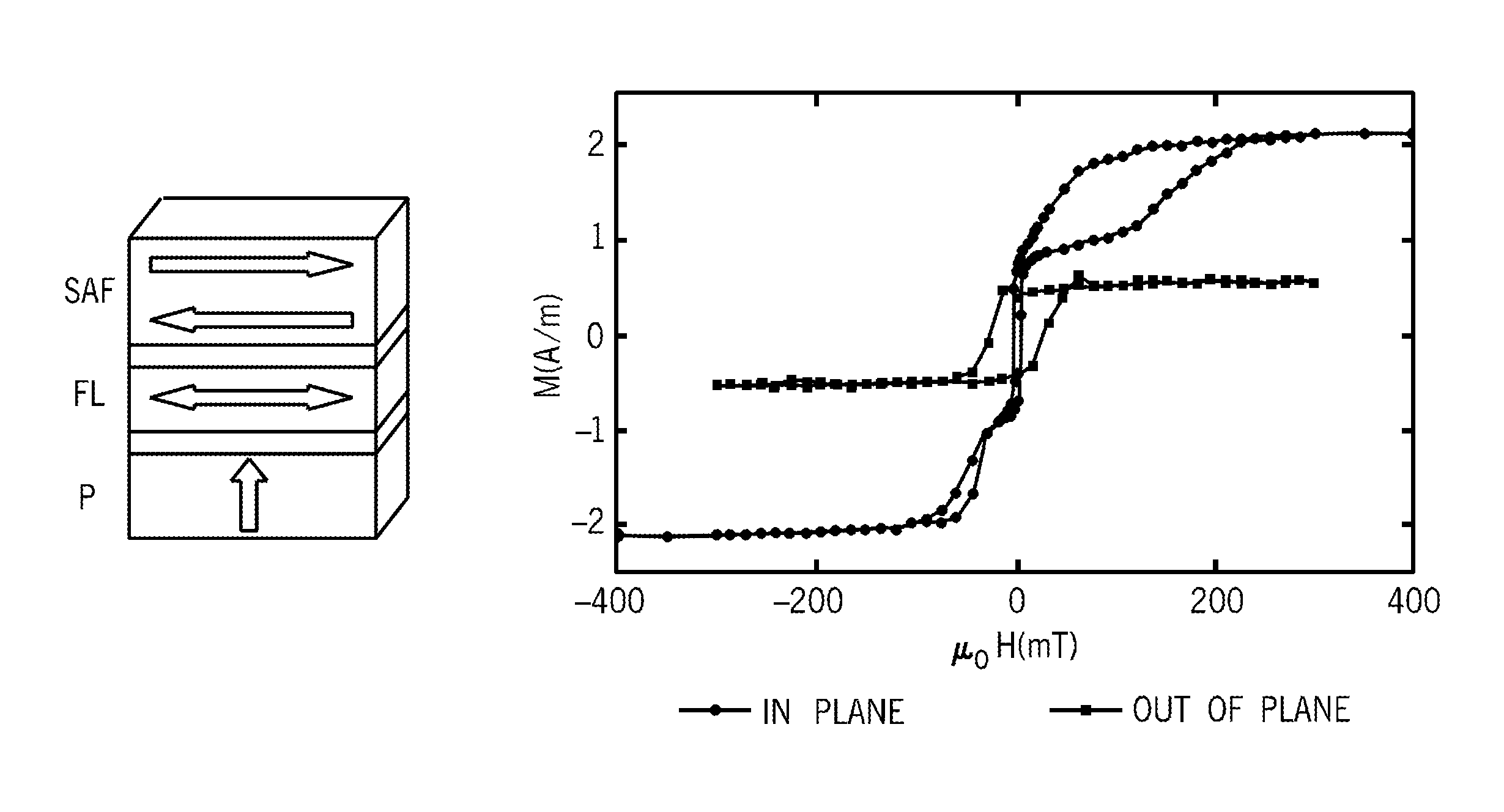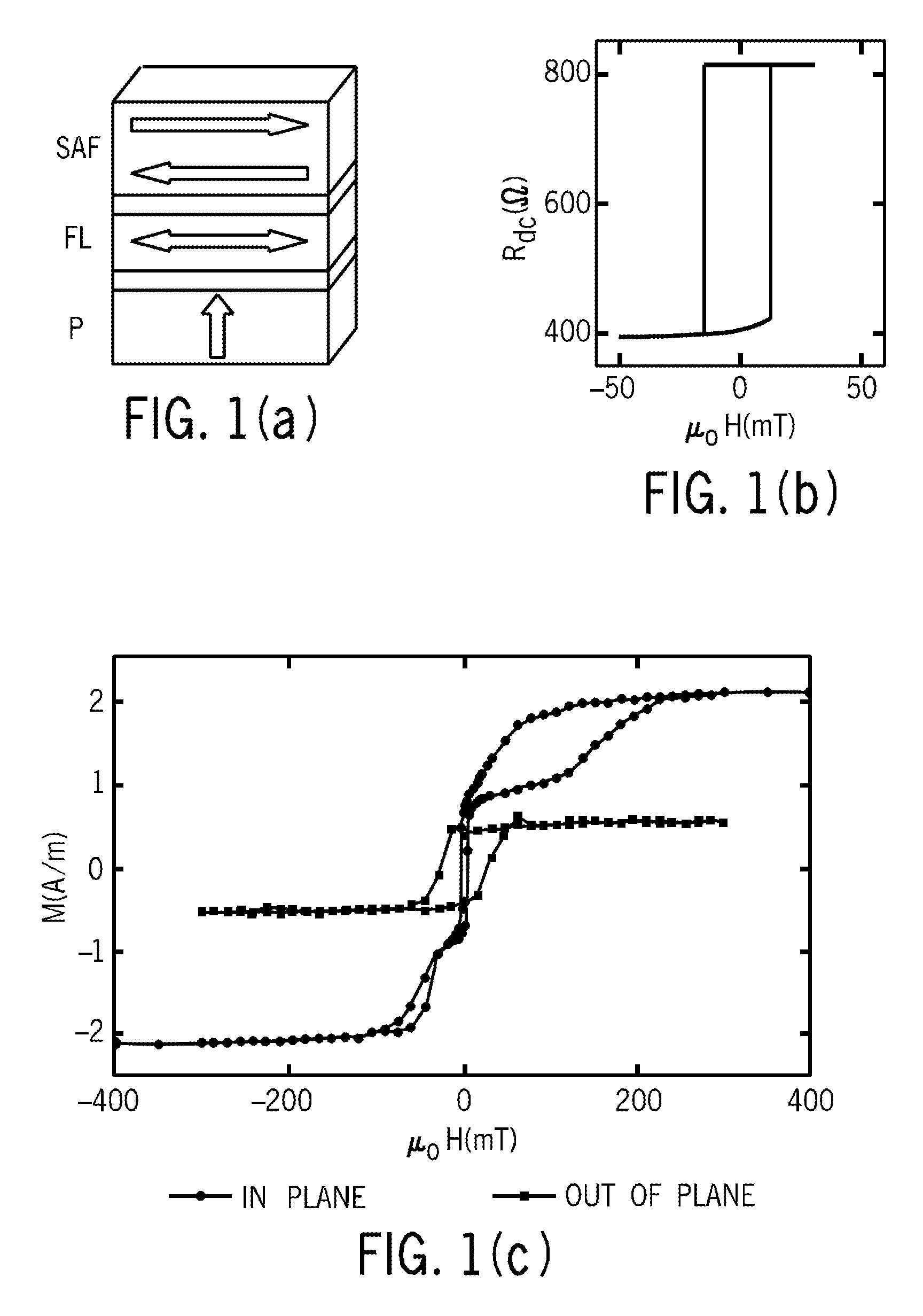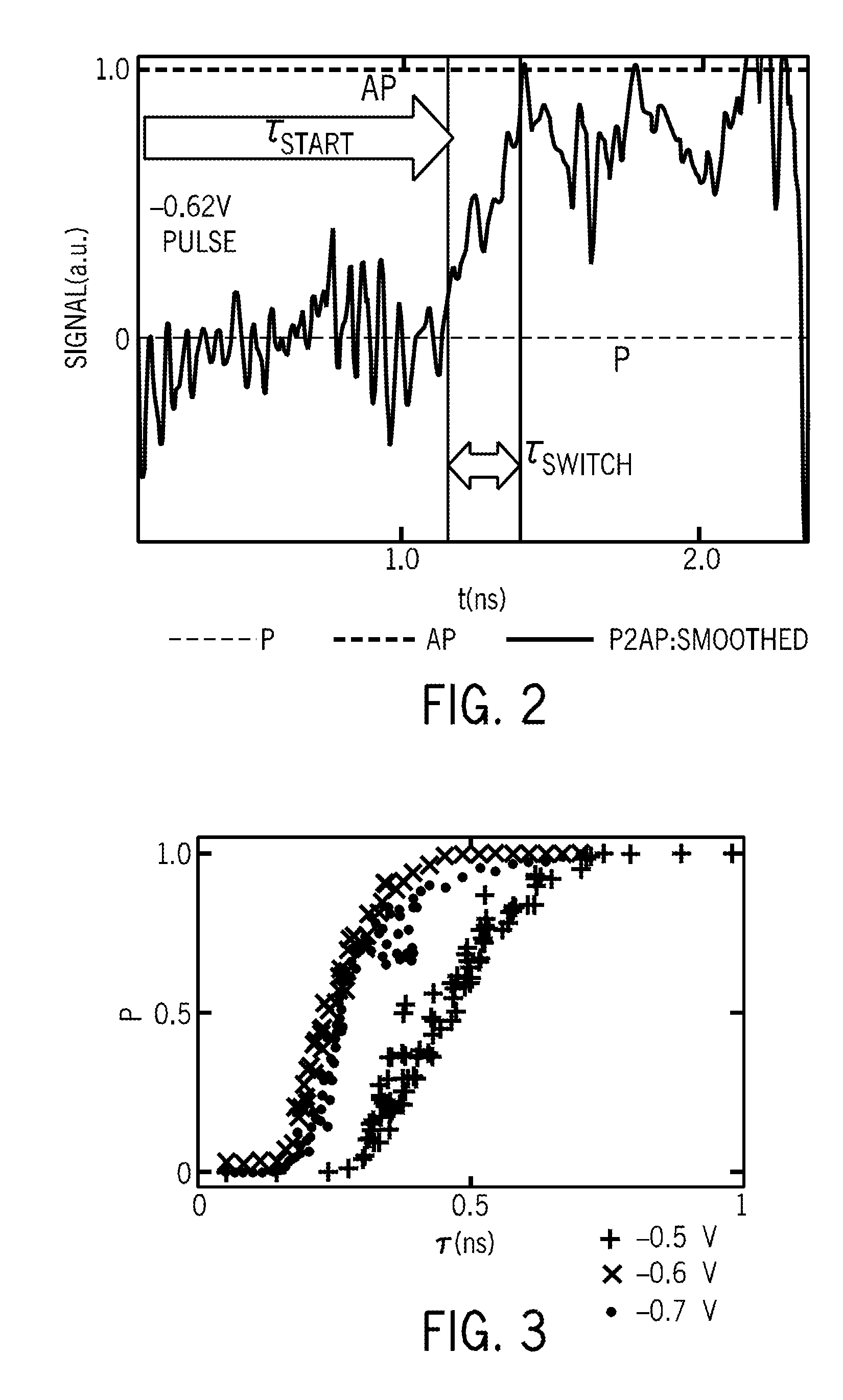Bipolar spin-transfer switching
a technology of spin-transfer switching and bipolar spin-transfer, which is applied in the field of magnetic random access memory of spin-transfer torque, can solve the problems of limiting the density of memory, slow device operation, memory operation errors, etc., and achieve the effect of improving magnetic memory or magnetic information processing devi
- Summary
- Abstract
- Description
- Claims
- Application Information
AI Technical Summary
Benefits of technology
Problems solved by technology
Method used
Image
Examples
example 1
[0042]The OST-MRAM layer stack was grown on 150 mm oxidized silicon wafers using a Singulus TIMARIS PVD module. The device layer structure is illustrated in FIG. 1(a). The polarizer consists of a Co / Pd multilayer exchange coupled to a Co / Ni multilayer. The Co / Ni multilayer has a high spin polarization due to the strong spin-scattering asymmetry of Co in Ni and a perpendicular magnetic anisotropy (PMA). To enhance the layer coercivity and remanence this layer is coupled to Co / Pd which has a very large PMA but a lower spin polarization due to the strong spin-orbit scattering by Pd. The polarizer is separated by 10 nm of Cu from an in-plane magnetized CoFeB free layer that is one of the electrodes of a MTJ. The MTJ structure is 3 CoFeB|0.8 MgO|2.3 Co0.4 Fe0.4B0.2|0.6 Ru|2 Co0.4 Fe0.3 16 PtMn (number to the left of each composition indicates the layer thicknesses in nm). The wafer was annealed at 300° C. for 2 hours in a magnetic field and then characterized by vibrating sample magnetom...
example 2
[0051]The magnetization dynamics of the device and method in the preferred embodiment can be modeled to a first approximation by considering the spin transfer torques associated with the perpendicular
[0052]ⅆm^ⅆt=-γμ0m^×H->eff+αm^×ⅆm^ⅆt+γaJm^×(m^×m^P)-βγaJm^×(m^×m^R)(2)
polarizer and the reference layer as follows:
[0053]where m represents the magnetization direction of the free layer (it is a unit vector in the direction of the free layer magnetization).α is the damping parameter of the free layer. The prefactor, aJ, depends on the current density J, the spin-polarization P of the current density J, and the cosine of the angle between the free and pinned magnetic layers, cos(θ), such that aJ=Jg(P,cos(θ)) / (eMt). The is the reduced Planck's constant, g is a function of the spin-polarization P and cos(θ), M is the magnetization density of the free layer, e is the charge of an electron, and t is the thickness of the free layer. The last two terms are the spin transfer from t...
example 3
[0057]In certain embodiments the reliable writing in which pulse duration is not critical. In such a case, for a memory operation, it may be preferable that the pulse duration not be a critical variable (i.e. the precise pulse duration would not determine the bit cell final state; only the pulse polarity—positive or negative—would be important. In this case, the device is provided with β about equal to or greater than 1. This can be accomplished in a number of ways:
[0058]The spin-polarization from the reference layer can be increased by choice of materials for the magnetic tunnel junction and reference layer. For example, CoFeB in contact with MgO has a large spin-polarization. Permalloy (NiFe) in contact with MgO has a lower spin polarization.
[0059]The spin-polarization from the polarizing layer can be reduced. This can be accomplished in a number of ways, for example, without limitation:[0060]a. Choice of materials for the composition of the polarizing layer: Co / Ni multilayers hav...
PUM
 Login to View More
Login to View More Abstract
Description
Claims
Application Information
 Login to View More
Login to View More - R&D
- Intellectual Property
- Life Sciences
- Materials
- Tech Scout
- Unparalleled Data Quality
- Higher Quality Content
- 60% Fewer Hallucinations
Browse by: Latest US Patents, China's latest patents, Technical Efficacy Thesaurus, Application Domain, Technology Topic, Popular Technical Reports.
© 2025 PatSnap. All rights reserved.Legal|Privacy policy|Modern Slavery Act Transparency Statement|Sitemap|About US| Contact US: help@patsnap.com



